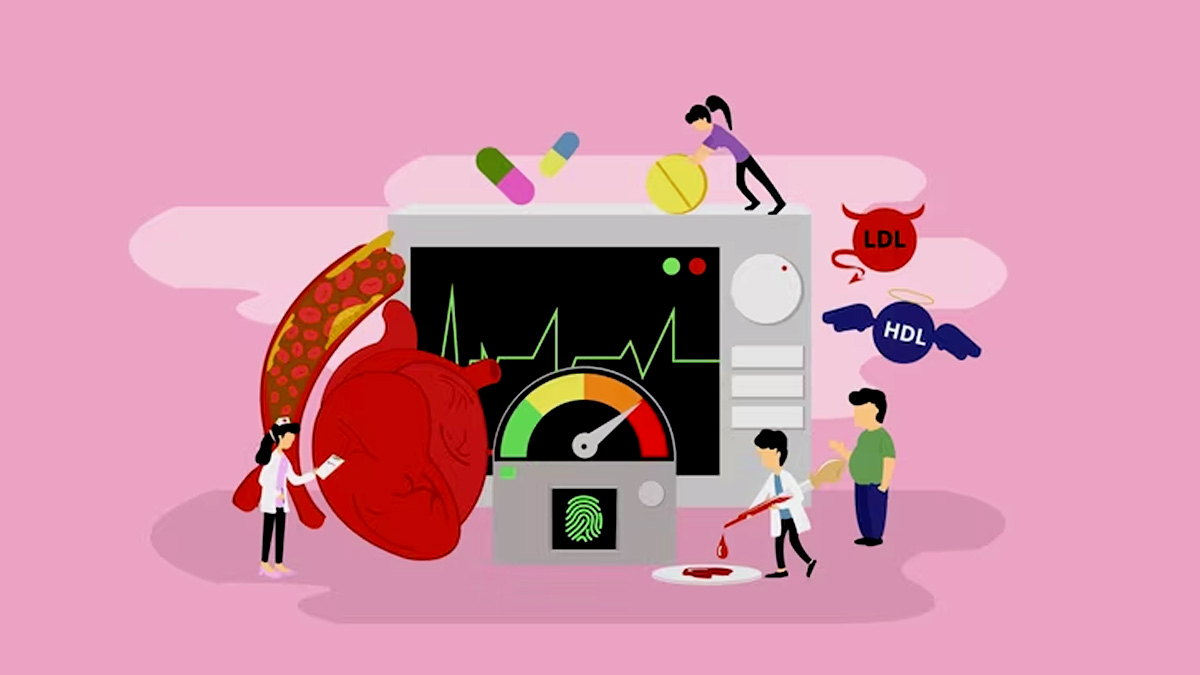
Peripheral artery disease, or PAD, causes blockage or narrowness in the arteries that supply blood to the arms or legs. We spoke to Dr S Srikanth Raju, Senior Consultant, Vascular, and Endovascular Surgeon, Foot Care Specialist, Yashoda Hospitals, Hyderabad, about this condition to make it easier for you to notice it and take the required help.
Table of Content:-
Atherosclerosis, or the accumulation of fatty deposits in the arteries, is a popular term used to describe why PAD occurs.
Symptoms Of Peripheral Arterial Disease
Many people who suffer from PAD have minimal symptoms. The most noticeable is leg pain while walking (claudication).
Muscle discomfort or cramping in the arms or legs that starts during vigorous exercise and stops with rest is an indication of claudication. The most common area where the pain occurs is the calf, which ranges from mild to severe. Severe leg pain, which is known as disabling claudication, can make it hard to walk or do other types of physical activity.

When PAD progresses, it can interrupt sleep as well. You can have temporary relief from this classical pain (rest pain) by walking or hanging your legs over the edge of the bed.
Apart from claudication and resting pain, another important symptom is a non-healing ulcer or gangrene.
Also Read: Can Diabetes Lead To A Four-Fold Increase In Coronary Artery Disease?
Other Peripheral Artery Disease Symptoms
- Coldness in the foot or lower leg, particularly when compared to the opposite side
- Leg weakness or numbness
- No or weak pulse or doppler signals in bilateral lower limbs.
- After engaging in specific activities, such as walking or ascending stairs, there may be sharp cramping in the calf muscles, thighs, or in one or both hips.
- Shiny skin on the legs
- Skin discolouration over leg and foot
- Delayed growth of the toenails
- Hair loss or reduced growth on the legs

Risk Factors Of Peripheral Arterial Disease
- Using tobacco products is the most potent risk factor for PAD
- Uncontrolled diabetes
- Ageing, if you are 50 years or older
- Ethnicity (African American)
- History of personal or family having heart or blood vessel disease
- High blood pressure or hypertension
- High cholesterol or hyperlipidemia
- Morbid obesity
- Blood clotting disorder
- Chronic kidney disease is both a risk factor and a consequence of PAD

PAD is diagnosed with the help of good clinical examination, ankle-brachial index (ABI), pulse volume recording (PVR), computerised tomography (CT), and magnetic resonance angiogram.
Treatment Of Peripheral Arterial Disease
PAD can be treated with lifestyle modifications, medications, and procedures.
Lifestyle Modifications
- Quit using tobacco products
- Eat a well-balanced diet rich in fibre and poor in cholesterol, fat and sodium
- Exercise or work out every day and maintain a low-stress level. You can perform yoga and meditation to have the benefits.
- Manage other health conditions, such as hypertension, diabetes, or high cholesterol
- Maintain foot and skin care regimens to prevent infection and reduce the risk of complications
- Indulge in a supervised exercise programme. People who suffer from claudication should walk at least 30 to 60 minutes daily. Walk till the discomfort drops to a moderate level, and then stop, or go away completely, and then start walking again.
Medications
According to Dr Raju, certain medications help in this regard:
- Antiplatelets - aspirin or clopidogrel
- Statins to control high cholesterol
- Cilostazol
- Antihypertensives to control blood pressure
- Antidiabetics to control diabetes
Minimally Invasive Or Surgical Treatments
More advanced PAD that is causing disabling claudication, rest pain and non-healing ulcer or gangrene may require surgical or endovascular (minimally invasive) treatment like:
- Peripheral artery bypass surgery
- Angioplasty/stenting/atherectomy
Also Read: Your Sedentary Lifestyle Is Making You Prone To Coronary Artery Disease: Says Dr. Ashwani Mehta
Self-Care Measures

The most important thing to consider is to take good care of your feet in order to prevent non-healing ulcers. People with PAD require the following foot care.
- Wearing comfortable, soft and customised shoes.
- Inspect their legs and feet daily for blisters, cuts, cracks, scratches or ulcers.
- Additionally, look for bruising, swelling, calluses, ingrown toenails, and increased temperature. Do not wait to treat a minor foot or skin problem.
- Keep your feet clean and well moisturised, but don't moisturise an area with an open ulcer or web spaces.
- Do not let your nails overgrow.
- Consult a specialist for any foot-related problems.
Image Credits: freepik
Also watch this video
How we keep this article up to date:
We work with experts and keep a close eye on the latest in health and wellness. Whenever there is a new research or helpful information, we update our articles with accurate and useful advice.
Current Version